High-tech in focus in the Audi Q6 Sportback e-tron
missing translation: fa.article-intro.reading-time – Copy: Patrick Morda- Photo: Tom Klocker Nadia Riaz-Ahmed – 12/17/2024
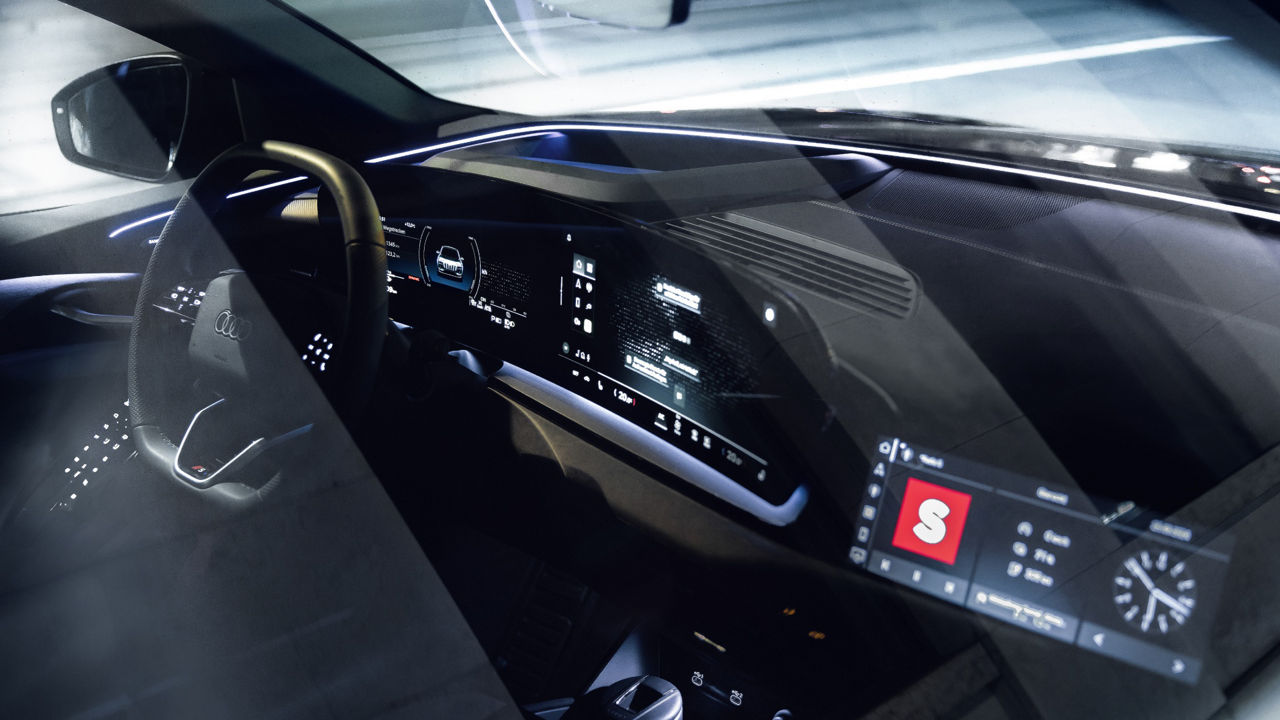
missing translation: fa.article-intro.reading-time – Copy: Patrick Morda- Photo: Tom Klocker Nadia Riaz-Ahmed – 12/17/2024
Whether on long highway drives or in dense urban traffic: keeping an overview of relevant driving information is essential. In the latest Audi models, important information is displayed on large screens in what is called the Digital Stage. Key components of the Digital Stage are the Audi MMI panoramic display and the MMI passenger display. However, another display is only visible during driving and is reserved for fully electric models based on the Premium Platform Electric (PPE) and the E³ 1.2 electronic architecture – such as the Audi Q6 Sportback e-tron.
“The new second-generation Augmented Reality Head-up-Display is a feature that makes ‘Vorsprung durch Technik’ – what Audi stands for – literally visible,” explains Tobias Muhr from Audi Product Marketing, who was responsible for implementing the AR HuD. The technology, he says, was already considered during the conceptualization of the Audi Q6 e-tron series and other PPE models. “That was important. The complex system requires a certain amount of space. Only our new fully electric models provide that,” says Muhr, adding: “In my opinion, we now offer a feature whose design and performance is truly impressive.”
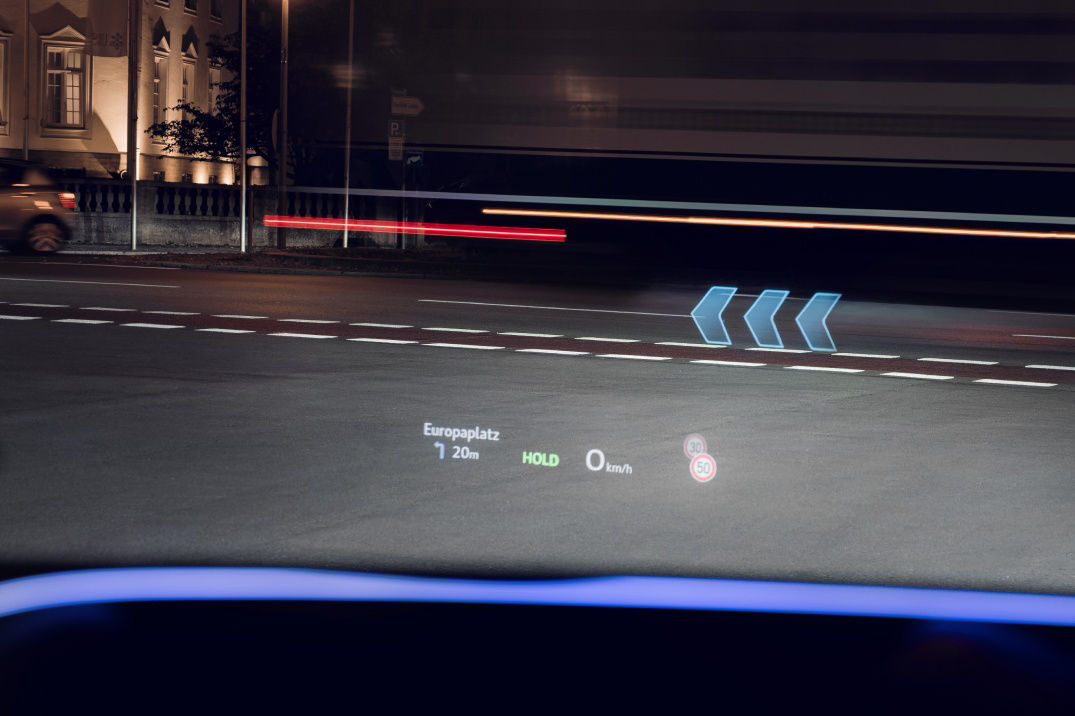
Turn instructions are visualized directly in the field of view. Especially in challenging or changing light conditions, the high-contrast and bright display helps.
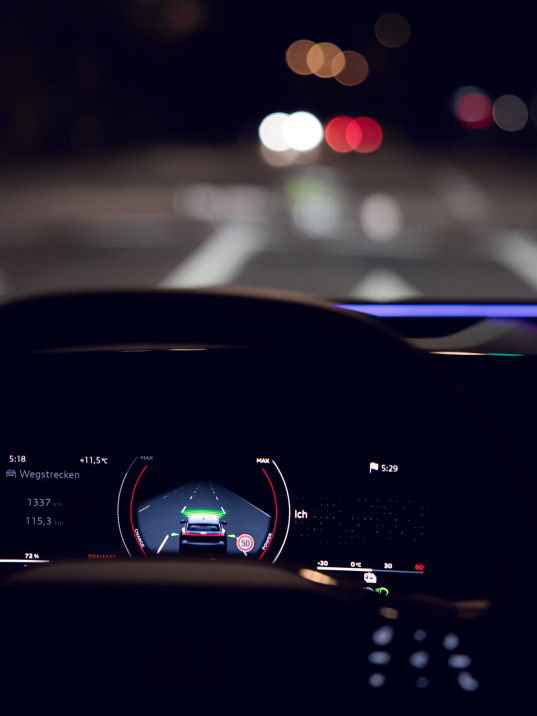
Relevant information is also displayed on the 11.9-inch Audi virtual cockpit.
Turn instructions are visualized directly in the field of view. Especially in challenging or changing light conditions, the high-contrast and bright display helps.
Relevant information is also displayed on the 11.9-inch Audi virtual cockpit.
The display reflects a large inclined image plane over the windshield and shows relevant information such as speed, traffic signs, assistance, and navigation symbols. The image plane is tilted forward to enhance the augmented reality effect. Through this approach and the high virtual image distance, it creates the impression that the displayed elements float up to 200 meters away and interact directly with elements in the environment. “Instead of visually overlaying the hood, the image in our AR HuD is positioned higher, enriching the road ahead with information,” says Tobias Muhr.
The “Field of View” for augmented reality content corresponds to a diagonal of about 88 inches from the driver’s perspective and is based on a Digital Light Processor (DLP). The processor, roughly the size of a fingernail, contains up to 1.3 million square micromirrors. Each of these mirrors measures just 8 microns along each edge. For comparison: the diameter of a red blood cell is approximately 8 microns. These tiny mirrors tilt up to 5,000 times per second to reflect or absorb light pulses, creating a brilliant image in the driver’s field of view.
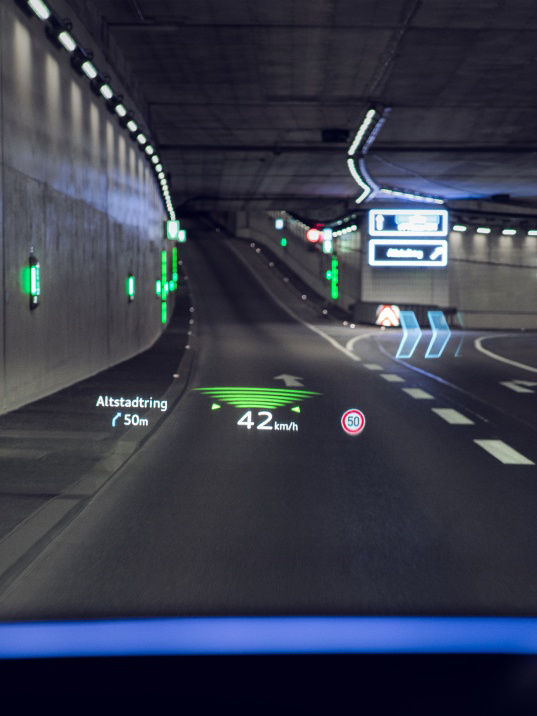
The high-resolution 11.9-inch Audi virtual cockpit is part of the freestanding Audi MMI panoramic display, executed in curved design and OLED technology.
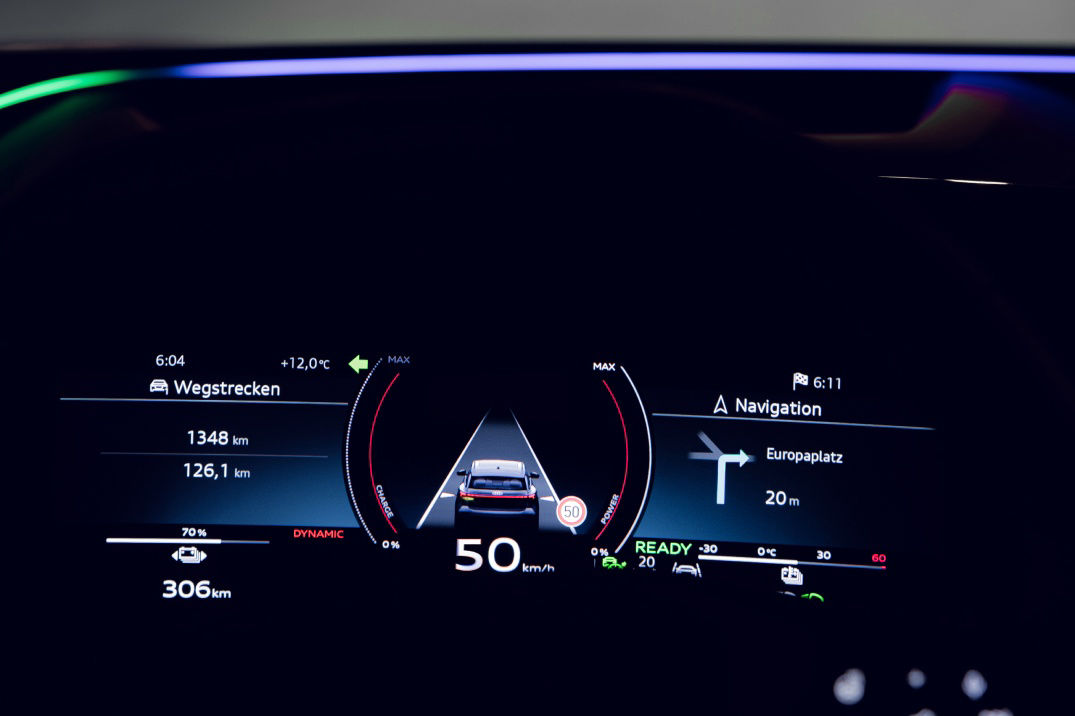
The high-resolution 11.9-inch Audi virtual cockpit is part of the freestanding Audi MMI panoramic display, executed in curved design and OLED technology.
The high-resolution 11.9-inch Audi virtual cockpit is part of the freestanding Audi MMI panoramic display, executed in curved design and OLED technology.
The high-resolution 11.9-inch Audi virtual cockpit is part of the freestanding Audi MMI panoramic display, executed in curved design and OLED technology.
inches
diagonally is equivalent to the driver's field of view for the augmented reality content in the Audi Q6 Sportback e-tron.
m
from the vehicle, the symbols displayed in the AR Head-up-Display appear to float and interact directly with elements in the environment.
nits
is the maximum image brightness the system can deliver. For comparison, very bright current smartphone displays reach 1,000 to 2,000 nits.
The displayed information is exceptionally high-contrast, sharp, and above all bright. The system achieves a brightness of up to 13,500 nits, while very bright current smartphone displays reach only about 1,000 to 2,000 nits. “This makes the system a great help, especially in strong sunlight or darkness, to make driving more comfortable and increase safety.” For navigation instructions, for example, the turning arrow is placed exactly where the turn is, and for driver assistance topics, distance warnings are displayed directly in the field of view and in relation to the critical event.
But the AR head-up display in the Audi Q6 Sportback e-tron also offers an entertaining extra. “We’ve added an Easter Egg: if you stay seated in the vehicle during charging, you can activate two games via the MMI,” reveals Tobias Muhr. Instead of driving information, 3D game graphics then appear in the HuD, and a space glider can be steered through an obstacle course using the paddle shifters and gas and brake pedals. And this, too, in impressive sharpness and brightness.
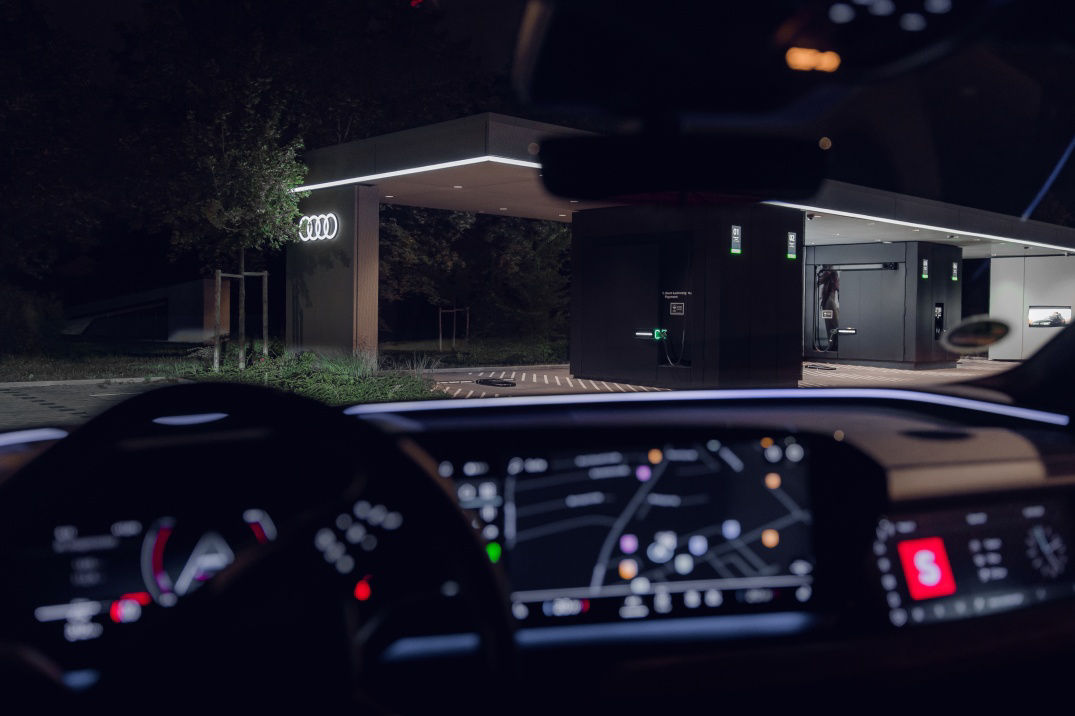
In addition to the optional AR HuD, the MMI panoramic display, consisting of the Audi virtual cockpit and the central touch display, is part of the Digital Stage in the Audi Q6 Sportback e-tron. The MMI passenger display is optionally available.
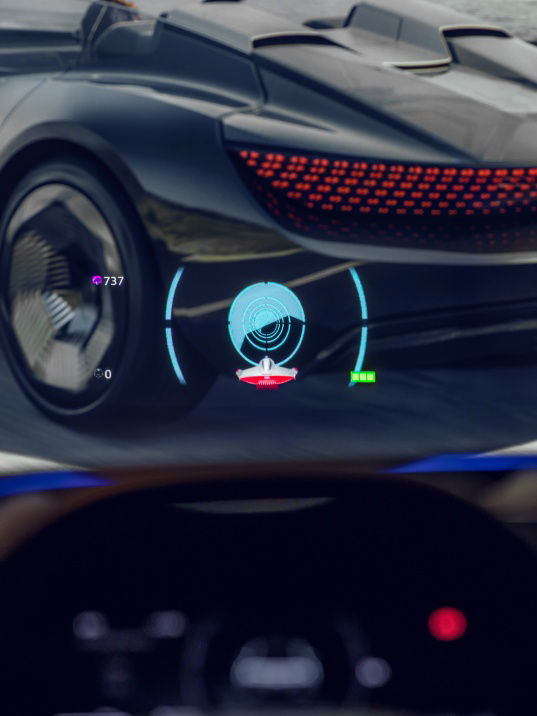
During charging stops, games can be played in the AR HuD via the MMI. The steering wheel paddles and foot pedals serve as controls.
In addition to the optional AR HuD, the MMI panoramic display, consisting of the Audi virtual cockpit and the central touch display, is part of the Digital Stage in the Audi Q6 Sportback e-tron. The MMI passenger display is optionally available.
During charging stops, games can be played in the AR HuD via the MMI. The steering wheel paddles and foot pedals serve as controls.